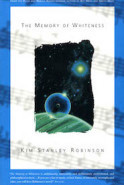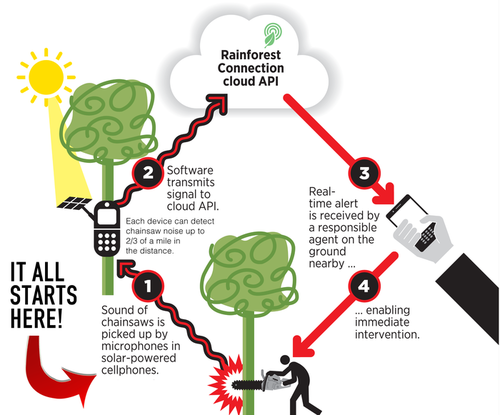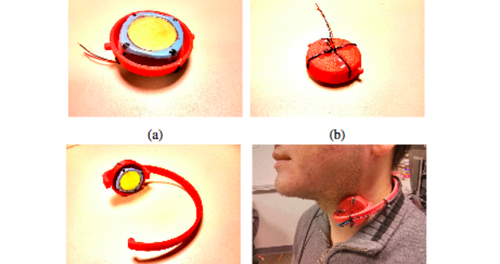Marc Weidenbaum's Blog, page 417
July 7, 2014
Moving Past Free Downloads
The Downstream category on Disquiet.com is getting a slight adjustment. Henceforth, it won’t be restricted to freely downloadable music; it will expand to include freely streamable music, and space will be allocated, as always, for freely downloadable work, especially music and sound intended for reuse via a Creative Commons license.
A little background: Since August 2003, almost 11 full years — some 3,989 days — this site has published 2,268 entries in the Downstream category. A lot has changed in that time. For longtime Downstream readers, and listeners, and subjects, it may be a surprise to learn that initially the section wasn’t restricted to downloads. There were even some videos early on. In any case, the Downstream quickly became focused on freely downloadable music, with a long run emphasizing music released by netlabels, and then on music hosted by SoundCloud.com.
The thing is, listening today is quite different than it was a decade ago. Back then, today’s cloud infrastructure was just getting started (Dropbox wasn’t released until 2008, a full five years after the Downstream started), free downloads were rare, and full streams hadn’t really taken off as a normal part of everyday listening.
Today, many of the best artist-oriented repositories of music, notably SoundCloud and Bandcamp, are built with free streaming as the core of the service. People mourn the decline in music sales but the fact is that even freely downloadable music doesn’t have the appeal it once did. New business and technological models are trying to anticipate and keep pace with the manner in which culture is consumed and created. There are many nifty approaches — a key one is Bandcamp’s mobile app, which automatically makes any purchased music available for unlimited streaming. It’s an interesting concept: you’re “buying” the music, but the real benefit is the hassle-free addition of the music to what someone somewhere with a white board probably would call your “listening workflow.”
The rise in free streaming as a means to promote music while retaining some control over its dissemnination has led to massive amounts of experimental and interrogative music being uploaded and shared. Expanding the Downsteam to include such work is a big part of this decision.
A case in point is Taylor Deupree’s ongoing 2014 Studio Diary, which is housed at SoundCloud.com. It currently contains two and three quarter hours of freely streamable music, consisting of some 71 tracks. They are each lovely, tiny little sonic gestures, ranging from cloud formations to glitchy beats, each a sketch, a notion, and no doubt potential source material for Deupree’s future commercial releases (he runs the label 12k).
And so it is with Deupree’s work that I initiate this shift in — this expansion of — the focus of the Disquiet Downstream. As of today I’m going to retire the “free” tag and replace it with two new tags: “recommended stream” and “free download.”
Follow Deupree’s 2014 Studio Diary at soundcloud.com/12k.
via instagram.com/dsqt
Disquiet Book Club: Kim Stanley Robinson’s The Memory of Whiteness
 As I’ve mentioned here on occasion, there’s ongoing discussion of Disquet Junto projects and other sound/art/technology topics over at the recently introduced disquiet.com/forums. We’re going to have another book discussion club coming up. The first such discussion group, about Daphne Oram’s An Individual Note of Music, Sound and Electronics, went nicely, though I think participation was limited in part due to time — I only gave one week’s notice. This time I announced on the Disquiet Junto email list on the first of the month that on July 15 the Disquiet book club is going to read Kim Stanley Robinson’s novel The Memory of Whiteness: A Scientific Romance. It’s about music in the far future. Here is the description as it appears on Amazon.com:
As I’ve mentioned here on occasion, there’s ongoing discussion of Disquet Junto projects and other sound/art/technology topics over at the recently introduced disquiet.com/forums. We’re going to have another book discussion club coming up. The first such discussion group, about Daphne Oram’s An Individual Note of Music, Sound and Electronics, went nicely, though I think participation was limited in part due to time — I only gave one week’s notice. This time I announced on the Disquiet Junto email list on the first of the month that on July 15 the Disquiet book club is going to read Kim Stanley Robinson’s novel The Memory of Whiteness: A Scientific Romance. It’s about music in the far future. Here is the description as it appears on Amazon.com:
In 3229 A.D., human civilization is scattered among the planets, moons, and asteroids of the solar system. Billions of lives depend on the technology derived from the breakthroughs of the greatest physicist of the age, Arthur Holywelkin. But in the last years of his life, Holywelkin devoted himself to building a strange, beautiful, and complex musical instrument that he called The Orchestra.
Johannes Wright has earned the honor of becoming the Ninth Master of Holywelkin’s Orchestra. Follow him on his Grand Tour of the Solar System, as he journeys down the gravity well toward the sun, impelled by a destiny he can scarcely understand, and is pursued by mysterious foes who will tell him anything except the reason for their enmity.
Thanks for considering joining in. There will be more such discussion groups in the future.
SOUND RESEARCH LOG: Sub Pop and Other Micro Streams
One of my long-standing discontents with iTunes is the absence of a metadata field for record label. Small labels in particular are now looking at private membership and specialized streaming systems to emphasize their curatorial role, [the New York Times reports]( http://ift.tt/1ktZDFC ):
> Last month, Sub Pop Records, an independent label that introduced artists including Nirvana and the Shins, announced a partnership with Drip.fm, a subscription streaming and download service. Fans who sign up for the Sub Pop feed on Drip.fm will pay $10 a month in exchange for albums, singles and special exclusives from the label.
> [O]ther younger, digitally savvy musicians are starting their own services to appeal directly to their fans, like Nicolas Jaar’s Other People and Ryan Hemsworth’s Secret Songs.
This entry cross-posted from the Disquiet linkblog project sound.tumblr.com.
SOUND RESEARCH LOG: Always On: Rainforests, Sleep Disorders, More

Nick Shchetko at blogs.wsj.com/digits surveys recent app developments related to “always on” microphones.
There’s Rainforest, a chainsaw-detection tool halfway through its Kickstarter campaign.
He also lists examples that “assess the quality of sleep, explain why a baby is crying, tell you when you’re stressed, identify mental disorder, track gunshots and even help to crowd-monitor endangered cicada species.”

And then there’s BodyBeat, prototype pictured above:
A crude prototype of BodyBeat, revealed in mid-June, uses an external custom-made microphone to track body sounds, such as breath or cough, with the ambitious aim to detect illnesses or record food consumption.
The microphone is placed on the neck with a 3D-printed neckpiece, which is plugged into a small audio processing device that is wirelessly connected to a smartphone. BodyBeat authors plan to redesign the system for better usability in commercial applications.
It may sound far-fetched. But there could be plenty of market opportunities for systems like BodyBeat. Breathing sounds are indicative of lung conditions, and data on what users consume – say, how often do they drink or eat certain products – can provide important data for diet tracking apps.
There are certainly limitations to sound-detection technology. The quality of embedded microphones remains a concern, for one. “The problem is you can’t create a robust app because everyone is using different microphones,” said Alexander Adams, who helped develop BodyBeat.
Found thanks to Alexis Madrigal’s http://ift.tt/1lPwWYp.
This entry cross-posted from the Disquiet linkblog project sound.tumblr.com.
July 6, 2014
When a Remix Is a Rearrangement
The eight-song Hancock by Small Professor and Arcka, two great Philadelphia-based beatcraftsmen, is several things. It’s a tremendous cache of off-kilter instrumental hip-hop. It’s the result of serious crate digging into the deep recesses of Herbie Hancock’s back catalog, in service of a remix-powered survey of the great keyboardist’s range. And it’s exactly the sort of record that I manage to play repeatedly and yet never get around to writing about. So, a short note here in the interest of that last matter not going any further. Released back in April, the album is some of the best work either the Professor or Arcka has uploaded yet for public consumption. Each track takes tantalizingly familiar items from individual Hancock songs and forms new things from them. A personal favorite is “New Loupe,” by Arcka, because it never loses sight of the all-acoustic nature of the source material. Rather than contemporize the material with synthetic additions, it restricts itself to the trad jazz original. The result is as as much a re-arrangement as it is a remix:
And here is the full set of eight tracks, half by Small Professor and half by Arcka:
Hancock by Small Professor & Arcka
Get the full set at smallarchitect.bandcamp.com.
More from Small Professor at smallprofessor.bandcamp.com and twitter.com/smallpro, and from Arcka at arckatron.us and twitter.com/arckatron.
SOUND RESEARCH LOG: Sound Design: That Sounds Hot
A lot of the class that I teach about the role of sound in the media landscape focuses on exploring the sonic aspects of organizations, enterprises, and products. This following bit is a good example of a company doing just that:
How does hot water differ from cold water, sonically. NPR listened in as the British firm Condiment Junkie set out to answer the question, in the service of a Twinings Tea advertisement.
Here is a set of examples of their research:
NPR’s summary:
The marketers wanted to know: Would it be possible to make that noise itself more appealing? Can people hear the difference between a hot cup of tea being poured and, say, a cold beer? And is it possible to make a hot drink sound hotter or a cold drink sound more refreshing?
So they did an experiment. They played sounds of hot and cold water being poured into glasses and asked people to guess: hot or cold? The results were kind of insane. Ninety-six percent of people can tell the difference between hot and cold, just by the sound.
Scott King of Condiment Junkie on the takeaway:
“There tends to be more bubbling in a liquid that’s hot,” he explains. “As you have more bubbling, you tend to get higher frequency sounds from it.”
The firm has also developed “interactive music boxes” for Selfridges and sound design for an Adidas spot. More at condimentjunkie.co.uk.
This entry cross-posted from the Disquiet linkblog project sound.tumblr.com.
July 5, 2014
SOUND RESEARCH LOG: What Will Be the Hamburger of Voice Search?
Even though it’s over two and a half years since Apple introduced Siri and almost 50 years since Douglas Rain provided the voice for Hal in 2001: A Space Odyssey, we’re very much at the beginning of voice control. There are few if any norms or standards for voice commands activated by users, especially in contrast with the increasing uniformity of web design, where common elements are pervasive, such as endless scroll, small-print footers, and the three-lined “hamburger” button that signifies the presence of a menu. The norms in voice search will be accumulated in the coming years, not just thanks to decisions made by the big players, but by small initiatives, like the Tabs Board controller, a Chrome extension covered yesterday by addictivetips.com:
Voice search integration arrived in Chrome quite a while ago and it is an excellent watered down basic version of Google Now. One of the many differences between Google Now and Voice Search on Chrome is that Google Now can launch apps installed on your device while Voice Search is simply what its name implies it is with no support for any other browser function. Tabs Board is a Chrome extension that helps you switch between tabs open in a window. It also lets you search for tabs by a voice command which is what sets it apart from other tab management extensions. Both the voice search and the tab switching overlay can be opened with a keyboard shortcut that a user can customize. You can search for tabs with either a voice command or you can search and select them using the mouse. The extension lists open tabs in an overlay at the bottom of Chrome.
As with most voice commands, the product assumes that your microphone is always one. Get Tab Boards at the chrome.google.com.
This entry cross-posted from the Disquiet linkblog project sound.tumblr.com.
Remote Dub
The prolific Japan-based musician who melds noise and beats, atmospherics both constructed and field-recorded, and who goes by the name Corruption has been rapidly expanding his SoundCloud presence, with 414 tracks at last count (at soundcloud.com/corrption). The producer has been mentioned here at least twice, once for the percussive prickles of “Lukewarm”, once for some Roppongi street noise, back when the file count was a mere 324. For a long time there was no additional information about Corruption associated with the uploaded tracks, but now there is a link to the small label damade-web.com. And now one of the Damade labelmates has posted a single track composed entirely of elements from Corruption tracks. It is a remote form of dub, just a slithery, shuffling beat below what could be a raspy melodica sample. It pulses and flows, occasionally filled out with distant synth chords, watery bubbling, and sonic cloud formations. But at its core it is hard, static dub.
Track originally posted at soundcloud.com/damade.





